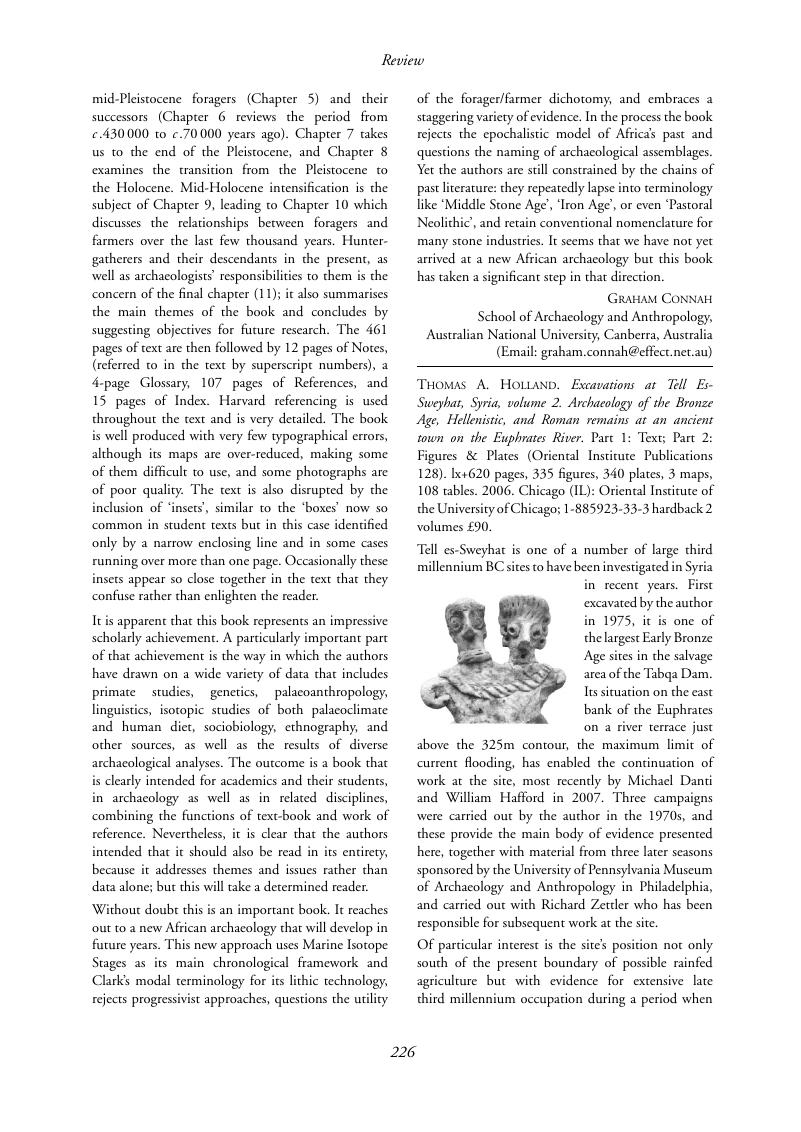No CrossRef data available.
Article contents
Thomas A. Holland. Excavations at Tell Es-Sweyhat, Syria, volume 2. Archaeology of the Bronze Age, Hellenistic, and Roman remains at an ancient town on the Euphrates River. Part 1: Text; Part 2: Figures & Plates (Oriental Institute Publications 128). lx+620 pages, 335 figures, 340 plates, 3 maps, 108 tables. 2006. Chicago (IL): Oriental Institute of the University of Chicago; 1-885923-33-3 hardback 2 volumes £90.
Published online by Cambridge University Press: 02 January 2015
Abstract
An abstract is not available for this content so a preview has been provided. Please use the Get access link above for information on how to access this content.

- Type
- Review
- Information
- Copyright
- Copyright © Antiquity Publications Ltd 2009
References
Danti, M.D. & Hafford, M. B. . 2008. The city of Sweyhat: a Mesopotamian mystery, Current World Archaeology 30(6): 34–40.Google Scholar
Oates, J. 2003. A note on the early evidence for horse and the riding of equids in Western Asia, in Levine, M., Renfrew, C. & Boyle, K. (ed.) Prehistoric steppe adaptation and the horse. Cambridge: McDonald Institute for Archaeological Research.Google Scholar
Wilkinson, T. J. 2004. Excavations at Tell es-Sweyhat, Syria, volume 1. On the margin of the Euphrates: settlement and land use at Tell es-Sweyhat and in the Upper Lake Assad Area, Syria (Oriental Institute Pu blications 124). Chicago: Oriental Institute of the Unive rsity of Chicago.Google Scholar
Zettler, R.L. 1997. Subsistence and settlement in a marginal environment: Tell es-Sweyhat 1989-1995 Preliminary Report (MASCA Research Papers in Science and Archaeology 14). Philadelphia: University of Pe nnsylvania Museum of Archaeology and Anthropology.Google Scholar


